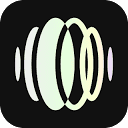The project provides a complete visual verification solution, mainly through the rerun tool:
- data cross-reference: The original point cloud is displayed overlaid with the predicted results, allowing you to visually check whether the wall positioning matches the real point cloud distribution.
- geometric measurement: In the .rrd visualization file, it supports interactive measurement of dimensional data such as the width of the door frame, and comparison with the actual dimensions on site.
- semantic calibration: By
visualize.pyThe colorful labeled boxes on the output quickly confirm that objects such as "refrigerators" are correctly classified and located.
Professional users can also parse the output .txt file, which contains a parameterized description of each element (e.g.WALL: plane_eq=[0,1,0,-3.2](denoting the wall equation for Y = 3.2), which facilitates programmatic verification.
This answer comes from the articleSpatialLM: Sweep the room, AI automatically draws 3D models for youThe





























